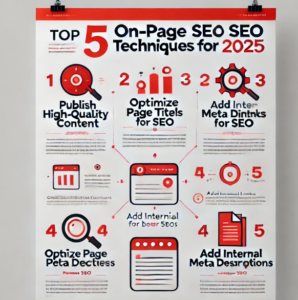Discover what a pillar page is and how it might benefit your SEO efforts, and look at some real-world examples of pillar pages.
Introduction
For a while now, pillar pages have been a successful approach to organising and presenting website content to consumers and search engines.
I’ll explain what a pillar page is in this piece, explain how it can benefit your Local SEO Services efforts, and provide some real-world instances of pillar pages in operation.
To begin, let’s define pillar pages.
How Do You Use A Pillar Page?
A pillar page is a landing page on your website that is dedicated to an important subject, resource, item, or service. It makes it quick and easy for users and search engines to access a ton of content that is topically relevant. Depending on their function, pillar pages’ depth will change.
Some may serve as a quick introduction to other content (kind of like a content page), while others will be more through, providing deeper standalone value and being supported by related content pieces. Each of the essential issues for your company, if you were to list them all, might logically justify being a pillar page. People can access a wide range of connected content from pillar pages in one place.
Additionally, they give search engines logically structured content that is easy to crawl, comprehend, and rank well in search. Cornerstone content, content hubs, content clusters, or pillar pages are terms you may have heard of in a variety of forums; in reality, they all refer to variations of the same strategy. If you picture a bicycle wheel, the hub is located in the middle. There are many spokes that branch off the hub. The pillar page (the main theme or topic) is the hub in the case of pillar content, and the associated content areas pointing to and from the pillar page are the spokes.
Numerous pages and other content categories may link directly to a single pillar page or indirectly through other subtopics that link back to the main/pillar page. Centralizing all relevant topical content from a single main landing location is still the basic interaction (the pillar page). Soon, I’ll give you some illustrations to assist you in better understanding this idea so you can see pillar pages in action.

What Can SEO Benefits Pillar Pages Provide?
It’s important to comprehend how pillar pages might improve your SEO performance before moving on to specific instances.
I’ll go through a few of the many advantages of adding pillar pages to your website in the paragraphs that follow.
- Enhancing Topical Authority Signals
Expertise, Authoritativeness, and Trustworthiness (E-A-T) is a fundamental component of Google’s standards and is used to determine a website’s overall quality score.
Simply put, Google utilizes E-A-T as a metric to determine whether or not the content is deemed to be of good quality; in that case, it is likely to rank higher regularly.
This is due to the following:
- Beneficial to people and helpful.
- Produced by demonstrably knowledgeable subject-matter experts.
- Placed on an appropriate website with the required authority signals.
- Display favorable user impressions and anticipated trust signals.
- Provides in-depth thematic coverage that should be sufficient to meet all of the user’s search requirements.
You can make it easier for search engines to recognize, interpret, and rank your material by organizing it in a clear hierarchy. Your topical signals are undoubtedly being offered to support more general Google policies like E-A-T.
Link building services enables you to highlight the themes that your company wants to be closely associated with online and improve the consistency and optimization of your ranking for those subjects. Consider a website, however, where the majority of the material is pitted against one another.
The quantity of noise for search engines and users increases when there is no obvious segmentation or hierarchy of subjects (or pillars) and every time you upload a new blog post or article to your website. You can see it quickly.
- Quicker, Easier, And More Comprehensive User Experience
Google has been boosting the importance of a good user experience for SEO results for many years. A more modern example of this is Core Web Vitals (CWVs). Devaluing websites and content that operate as barriers between users and their intended destinations, such as interstitials or websites with perceived low-value content, is another instance of this in action. Other examples include using site speed and mobile-friendliness as ranking considerations.
You may direct visitors to the most important parts of the subject they are interested in using pillar pages. By distributing comprehensive, more meaningful content, you may send out obvious trust signals. Your specialists can be highlighted by the content they are linked to and bind it to a central resource.
By making it easier for users to obtain relevant content and by motivating them to complete the information-seeking and purchasing cycle more quickly, you may improve user engagement signals. Additionally, by concentrating your efforts on a limited number of primary destination pages, you can guarantee that they load quickly and are easy to use. You also streamline the incremental adjustments you make over time as you refine them using fresh data sets. More information on enhancing Local SEO with user experience may be found here.
- Value-Based, Organic Link Building
You can organically accumulate external trust signals, such as links, while offering a one-stop shop where customers can easily address a variety of linked issues, wants requirements, and pain points. Consider all of the numerous social listening alternatives you have to share your audience with your comprehensive pillar pages. With your pillar pages, you are offering free, openly shareable content resources that are great for PR, link building, and brand development.
Additional SEO Advantages Of Pillar Pages
Using pillar pages has numerous extra SEO advantages, but normally these would include the following:
- Finding (and filling) content gaps more frequently to show up for a larger variety of search phrases
- Enhancing your website’s internal organization and the link signals (and value) that point to important content pillars.
- Linking your brand and subject-matter specialists to hot-button business issues will probably enhance conversions and SEO traffic.
- Lowering bounce rates while increasing other metrics like time spent on page or site and other indicators of content quality.
Various Pillar Page Examples
There are many various uses for pillar pages, so I figured it would be helpful to include a few here to wrap up this post.
- Pillar Page For Products
This excerpt from Foresters Friendly Society shows how a single pillar page can offer the following:
- Trust indicators from independent assessments.
- Access to the most popular user themes and one content page per topic.
- Interactive material to boost value and trust signals.
- Increased brand signals.
- Subject-Pillar Page
You can see how a single pillar page delivers the user and search engines the following by examining these sample excerpts from the University of East Anglia (UEA) life at campus landing destination:
- For an easier user experience, quick access to core material.
- For easier content digestion, condensed and graphic material highlights.
- Chunks of material that are mobile-friendly for fact-finding on the fly.
- Signposting for current events in the text helps users continue studying without having to look for information.
- Storification can aid in building a connection between a person and a brand.
Conclusion
Not only are pillar pages a great method to structure the content of your website, but they may also have a big impact on SEO.
By utilizing pillar pages, you can make your website faster, more efficient, and more user-friendly, making it simpler for both visitors and search engines to connect with it.
Utilize pillar pages if you want to improve your SEO efforts right now!










